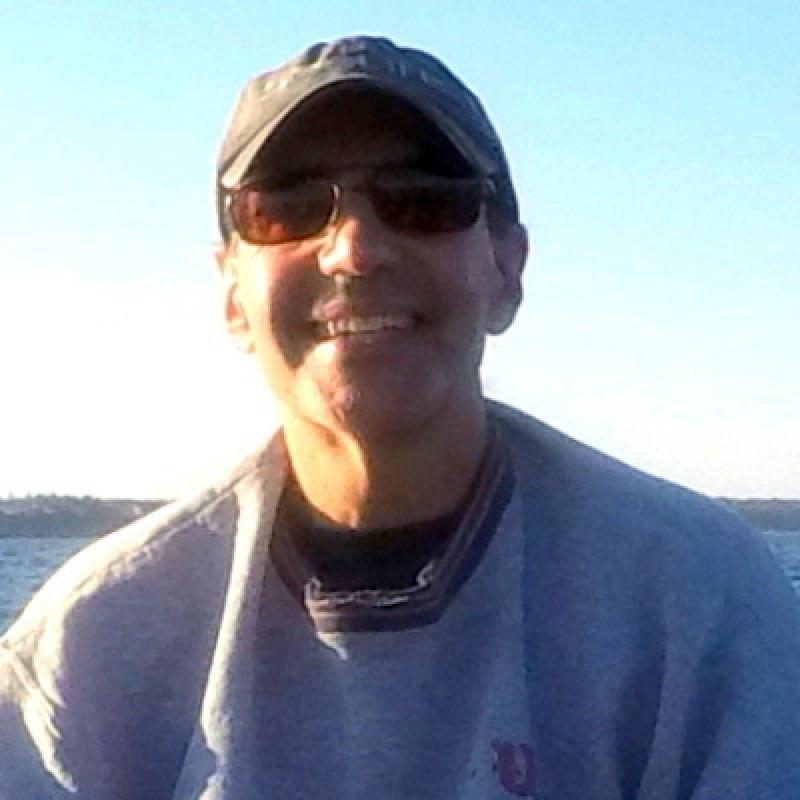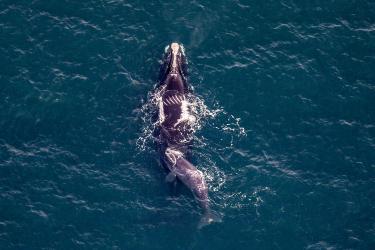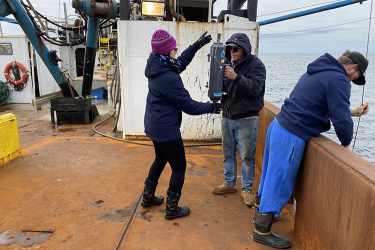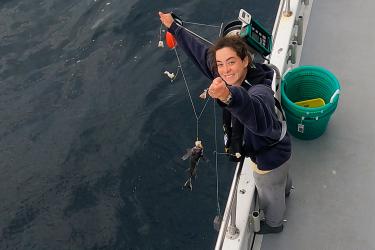NOAA Ship Henry B. Bigelow left Newport for the Spring Ecosystem Monitoring Survey on Tuesday, May 31 to start sampling southern New England waters, but we were forced to return the next day. Despite testing, vaccinations, and boosters required of everyone on board, a crew member started having symptoms and then tested positive. This virus can affect even the most prepared personnel.
The Bigelow returned to sea on Friday, June 3 with a new crew member and headed for the outer continental shelf, working its way south. With no other appearances of the virus and good weather, the vessel made excellent progress, reaching its southernmost station off the coast of Virginia on Sunday morning.
As usual with EcoMon surveys, we have many missions to carry out. Our primary objective is to gather data on hydrographic conditions and distribution and abundance of plankton populations along the U.S. northeastern coast.
On this cruise, we have a Wellesley College student collecting water samples to monitor near-surface seawater oxygen levels. A student from the University of Rhode Island Graduate School of Oceanography is freezing small portions of our plankton samples to observe the carbon and nitrogen isotopes in their tissues.
Researchers from our Milford Lab are filtering seawater for traces of environmental DNA left behind by marine organisms swimming through the water column.
An imaging FlowCytobot from the Woods Hole Oceanographic Institution is plumbed into the ship’s seawater system. This instrument collects images of marine phytoplankton like diatoms and dinoflagellates living in surface water. Other instruments connected to the flow-through system measure the amount of carbon dioxide and the total alkalinity of the seawater being pumped in.
To monitor marine life on the other end of the size spectrum, we have two observers on the ship’s flying bridge. They are looking for whales, dolphins, seabirds, and sea turtles, which they photograph and document all along our cruise track.
We are also collecting tiny sea snails, called pteropods, for a researcher at the Bermuda Institute of Ocean Sciences. She correlates these snails’ shell thickness to seawater acidity from samples where the pteropods were caught.
Finally, as part of our ongoing outreach program, students from the Cranston West High School in Rhode Island contributed a number of decorated Styrofoam cups. These cups, which will shrink at depth and be returned to the students when the cruise is over, are installed in a yellow mesh bag tucked in the middle of our brand-new 24-bottle water sampling rosette. This device can collect 10 liters of water at 24 different depths, depending on what parts of the water column are of interest to the scientists on board.
Now we just need good weather to allow us to cover as much ocean as possible before we return to Newport, Rhode Island on June 17!
Jerry Prezioso Chief scientist - Spring Ecosystem Monitoring Survey HB2204






